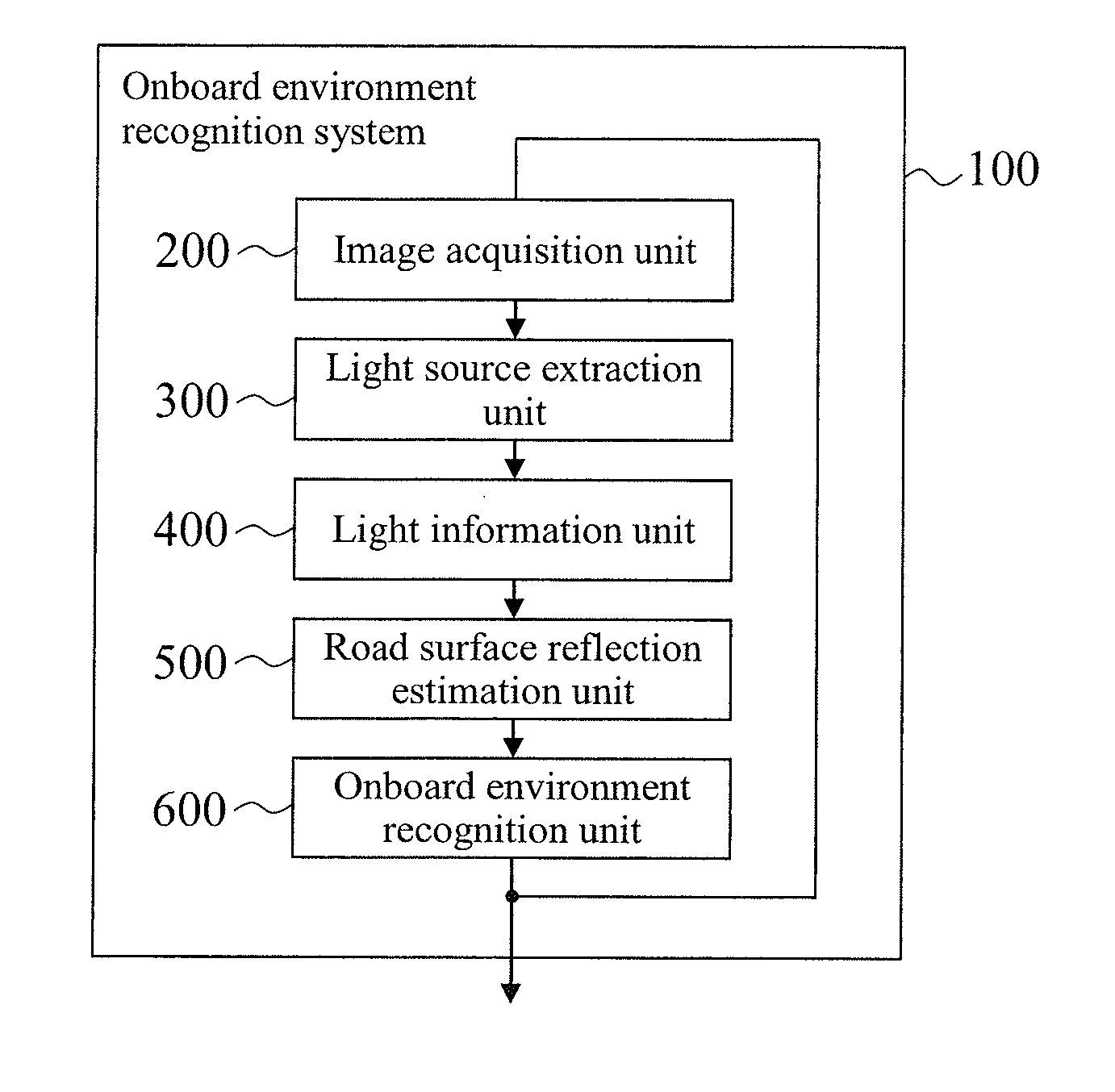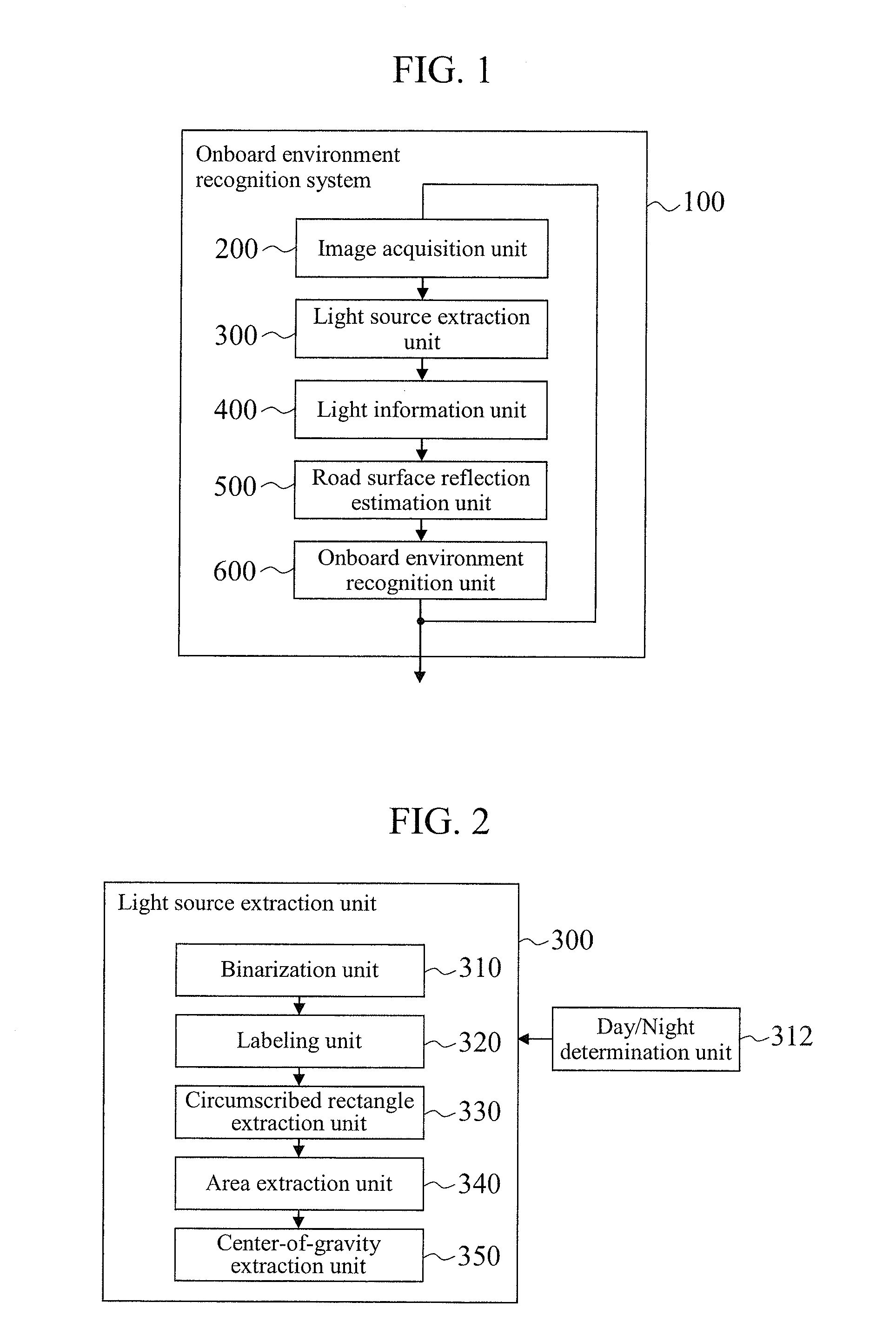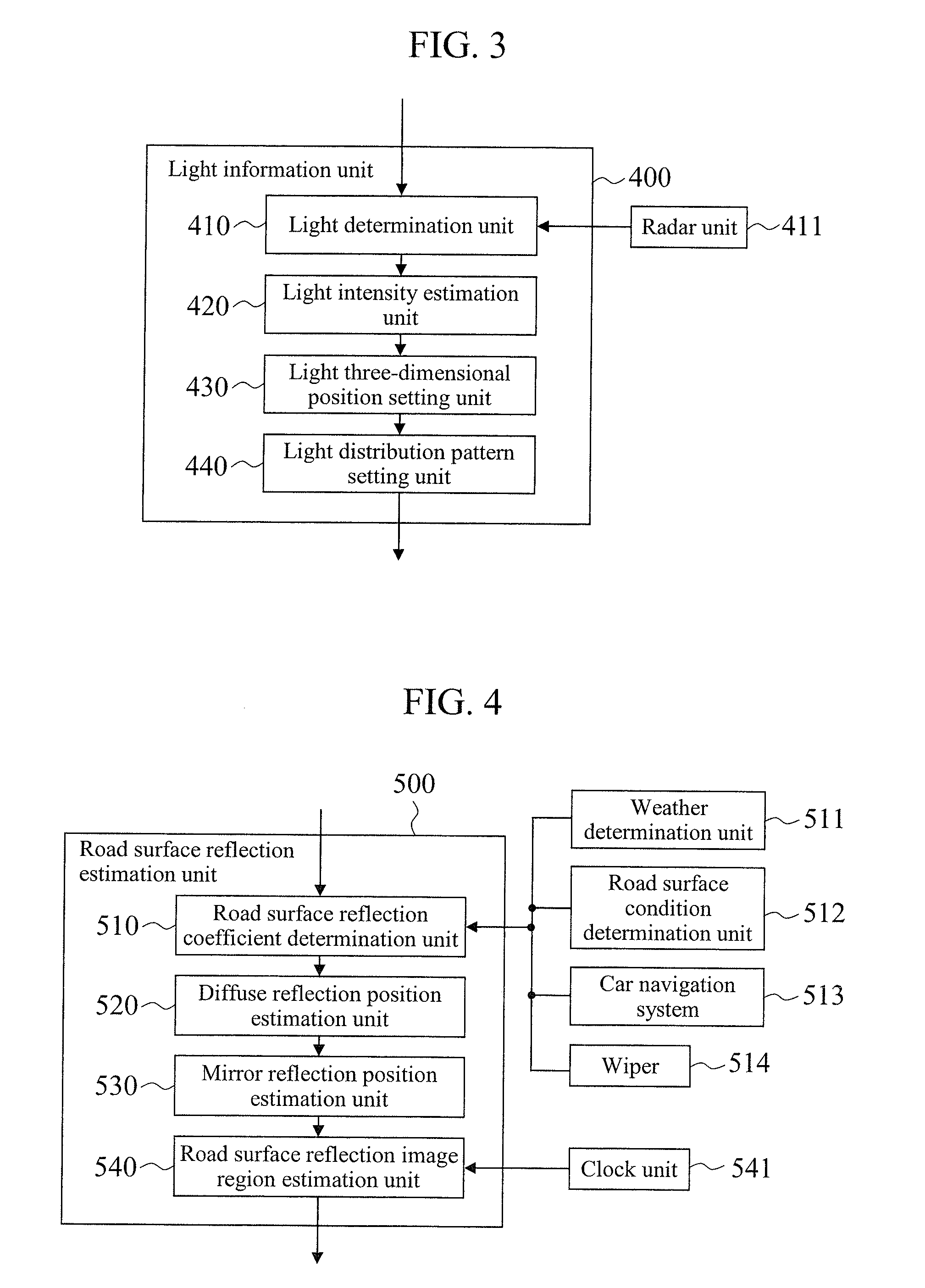Onboard Environment Recognition System
a recognition system and environment technology, applied in the field of onboard environment recognition system, can solve the problems of erroneous detection, low luminance in images, and inability to accurately recognize reflection regions having low luminance, etc., and achieve the effect of accurate recognition
- Summary
- Abstract
- Description
- Claims
- Application Information
AI Technical Summary
Benefits of technology
Problems solved by technology
Method used
Image
Examples
embodiment 1
[0031]An onboard environment recognition system according to an embodiment 1 is integrated into an onboard camera on an automobile that displays, to the driver, an image of surroundings of the vehicle taken by a rear camera or a side camera for parking assistance.
[0032]FIG. 1 is a diagram showing a configuration of the onboard environment recognition system according to this embodiment.
[0033]As shown in FIG. 1, an onboard environment recognition system 100 has an image acquisition unit 200, a light source extraction unit 300, a light information unit 400, a road surface reflection estimation unit 500 and an onboard environment recognition unit 600 as internal features of an ECU of an onboard camera.
[0034]The image acquisition unit 200 acquires an image of surroundings of the vehicle taken by a monocular camera, and the light source extraction unit 300 extracts a light source from the image acquired by the image acquisition unit 200. The light information unit 400 determines whether ...
embodiment 2
[0154]An embodiment 2 is characterized in that a road surface reflection estimation image region in the image caused by the evening or rising sun is estimated. The flow of the process of masking the road surface reflection estimation image region is basically the same as that in the embodiment 1, and therefore, only major differences from the embodiment 1 will be described in detail.
[0155]As shown in FIG. 14, the vehicle environment recognition system 100 has the day / night determination unit 312 that determines whether it is day or night and, based on the result of the determination by the day / night determination unit 312, selectively uses the light information unit 400 and the road surface reflection estimation unit 500 in the nighttime when the influence of the sunlight does not have to be taken into consideration or an evening sun-caused road surface reflection information unit 4000 and an evening sun-caused road surface reflection estimation unit 5000 in the daytime, such as mor...
PUM
 Login to View More
Login to View More Abstract
Description
Claims
Application Information
 Login to View More
Login to View More - R&D
- Intellectual Property
- Life Sciences
- Materials
- Tech Scout
- Unparalleled Data Quality
- Higher Quality Content
- 60% Fewer Hallucinations
Browse by: Latest US Patents, China's latest patents, Technical Efficacy Thesaurus, Application Domain, Technology Topic, Popular Technical Reports.
© 2025 PatSnap. All rights reserved.Legal|Privacy policy|Modern Slavery Act Transparency Statement|Sitemap|About US| Contact US: help@patsnap.com



